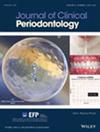Dental Calculus Formation Rate: The Role of Salivary Proteome and Metaproteome
Abstract
Background
Dental calculus accumulation varies across individuals. While various factors contribute to its accumulation, the role of salivary composition remains underexplored. This study aims to compare individuals suffering from rapid rates of dental calculus formation rates with those having slow formation rates in terms of salivary electrochemical properties as well as its proteomic, metaproteomic and elemental composition.
Methods
A total of 26 patients with a history of dental calculus were recruited. Saliva samples were collected and evaluated for electrochemical properties as well as elemental, proteomic and metaproteomic composition. Patients were provided scaling treatment to remove all calculus. Six months after the dental cleaning patients were re-assessed for the presence of dental calculus. Based on the dental calculus formation rate participants were categorised into slow (57.7%) and rapid calculus formers (42.3%) that were then assessed for differences in salivary composition.
Results
Rapid calculus formers exhibited a more neutral zeta-potential and lower concentration of salivary calcium ions than their slow-forming counterparts. Proteomic analysis identified 895 proteins across all samples. Of these, 38 proteins were exclusive to the rapid formation group, while 24 proteins were specific to the slow group. The rapid group demonstrated augmented pathways related to cell binding (e.g., cytoskeletal regulation by Rho GTPase and integrin signalling), inflammatory mediation (e.g., chemokine and cytokine signalling) and neurodegenerative disorders (e.g., 5-Hydroxytryptamine degradation, Huntington's disease and Parkinson's disease) and significant enrichment in peptidase inhibitor activity. In contrast, the slow group demonstrated enrichment mainly in immune response. Metaproteomic analysis for salivary bacteria showed significant predominance of Streptococci in the rapid group and elevated levels of Rothia in the slow group.
Conclusion
The saliva of patients with rapid calculus formation rates differs from that of patients with slow rates of calculus formation in terms of electrochemical properties as well as proteomic, metaproteomic and elemental composition.


 求助内容:
求助内容: 应助结果提醒方式:
应助结果提醒方式:


